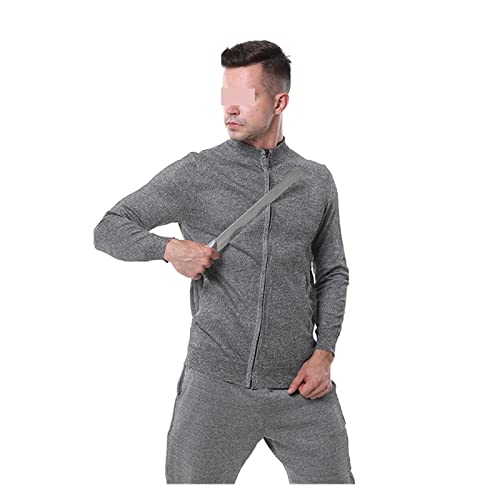Understanding Cut-Resistant Jackets: What They Are and How They Work
Defining Cut-Resistant Jackets
Cut-resistant jackets are specialised garments designed to protect wearers from cuts and abrasions. They are particularly useful in environments where sharp tools or materials are commonly handled, such as in construction, gardening, or certain industries like manufacturing and processing. These jackets are made using materials that are not just tough but also lightweight, allowing for easy movement while still ensuring safety.
Mechanism of Protection
The protection offered by cut-resistant jackets comes from the unique woven or knitted fibres that resist cuts and tears. Unlike regular clothing, these jackets are engineered to withstand sharp objects without compromising the wearer’s safety. When you wear a cut-resistant jacket, the fibres work to distribute the force of a cut over a larger surface area, minimising the risk of injury.
Choosing the Right Material: Types of Cut-Resistant Fabrics Explained
Understanding Fabric Types
When looking for a cut-resistant jacket, it’s essential to understand the different types of fabrics used. Common materials include Kevlar, Dyneema, and high-performance polyethylene. Kevlar is renowned for its strength and durability, making it a popular choice for cut resistance. Dyneema, on the other hand, is known for its lightweight properties, offering excellent cut protection without sacrificing comfort.
Comparing Performance Characteristics
Each fabric type varies in terms of cut prevention, comfort, and flexibility. For example, if you’re moving around frequently in your job, a lighter fabric may be more suitable, while heavier materials may be necessary for activities that involve more vigorous movement. Think about what you need based on the tasks you’ll be performing.
Key Features to Look For: Safety, Comfort, and Fit
Safety Features
Safety is paramount when selecting a cut-resistant jacket. Look for jackets with a high cut resistance rating, which indicates their level of protection. Additionally, check for reinforced seams and high-quality zippers, which contribute to the overall integrity of the jacket.
Comfort and Mobility
Comfort should never be compromised for safety. Choose jackets with ergonomic designs that allow for easy movement. Features such as moisture-wicking materials can help keep you cool and dry, which is especially important during long hours of wear.
Finding the Right Fit
A well-fitting jacket not only enhances safety but also improves comfort. When trying on jackets, ensure there’s enough room for layering underneath without being overly loose. Adjustability features like elastic cuffs and drawstrings can help achieve a better fit, ensuring the jacket stays in place during your activities.
Real-Life Applications: When and Where to Use Cut-Resistant Jackets
Wearing Cut-Resistant Jackets in the Workplace
If you work in construction, a cut-resistant jacket can be an essential piece of your safety gear. Tasks that involve handling sharp tools or materials greatly benefit from the additional protection these jackets provide. Whether you’re cutting materials or dealing with heavy machinery, the jacket serves as a safeguard.
Home Use and DIY Projects
Cut-resistant jackets are not just for professionals; homeowners undertaking DIY tasks can greatly benefit from wearing these jackets. Whether you’re trimming branches in the garden or using a power saw for home repairs, having a jacket that offers protection against cuts is a wise choice.
Our Top Picks: Recommended Cut-Resistant Jackets for Everyday Use
Best Overall Cut-Resistant Jacket
For everyday wear, we recommend a cut-resistant jacket made from a blend of Kevlar and polyester. This combination offers excellent cut protection while remaining lightweight and comfortable for all-day use. The ergonomic fit ensures mobility, making it ideal for both work and leisure.
Best Value for Money
If you’re looking for a balance between affordability and quality, a mid-range cut-resistant jacket that features a layer of high-performance polyethylene is a great option. It provides solid cut resistance while being cost-effective, making it suitable for both professionals and DIY enthusiasts.
Best for Heavy-Duty Use
For those who work in high-risk environments, opt for a heavy-duty cut-resistant jacket featuring reinforced seams and extra padding. This type ensures maximum protection against cuts and is ideal for industrial settings where safety is critical.




















